If you’ve ever blown a dandelion that’s gone to seed, you’ve probably found that the little parachute-like seeds detach easily and seem quite delicate. However, dandelion seed puff balls are stronger than you think!
A whole dandelion head can be placed in water and removed again, almost completely undamaged!
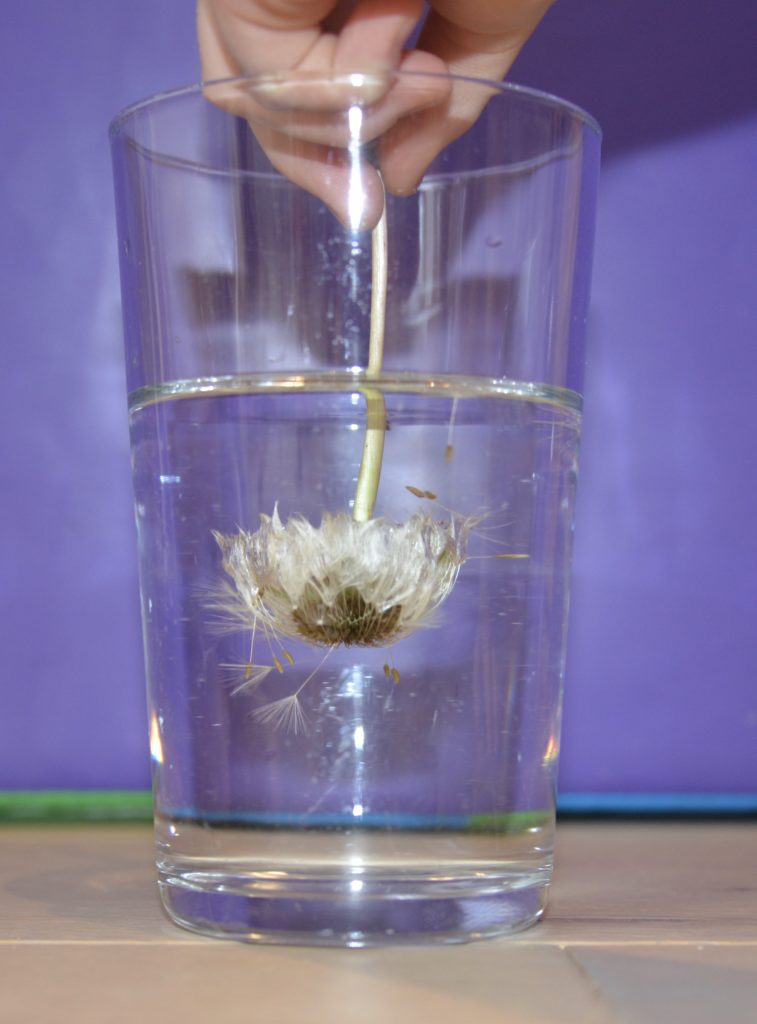
What happens to a dandelion in water?
Each dandelion seed is attached to a tiny parachute like structure ( called a pappus ) made up of lots of filaments which allow the seed to fly away on the wind. This clever dispersal method clearly works well as dandelions are very abundant.
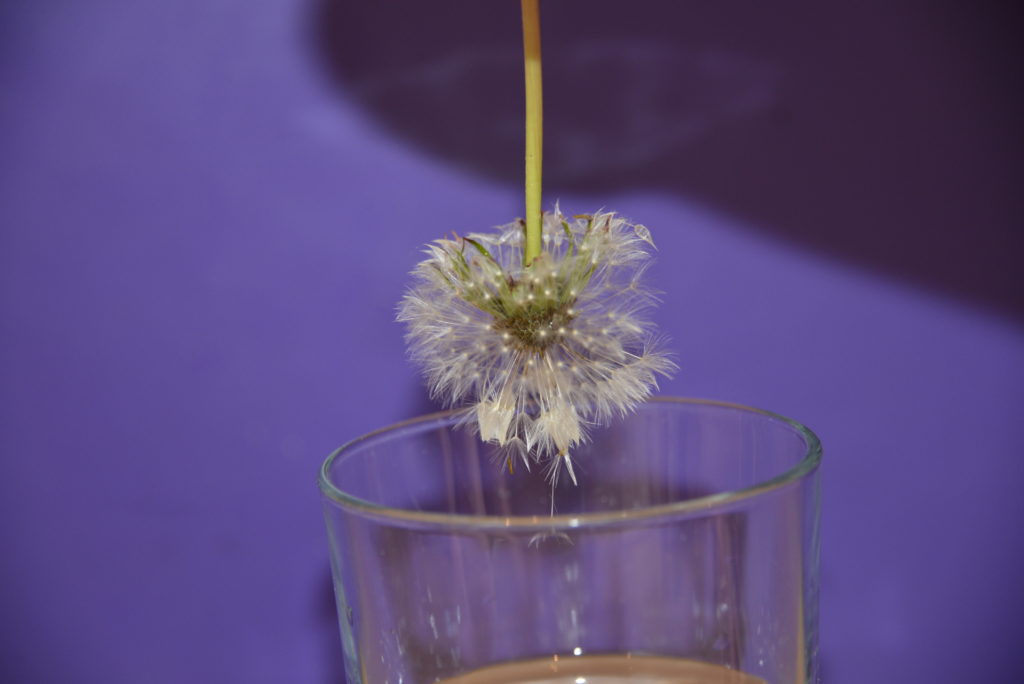
Is a dandelion waterproof?
The pappus is omniphilic, which means it repels both oil and water. When the tiny hairs of the pappus are submerged in water, they close up, trapping a water droplet inside.
This feature may help dandelions survive in wet conditions.
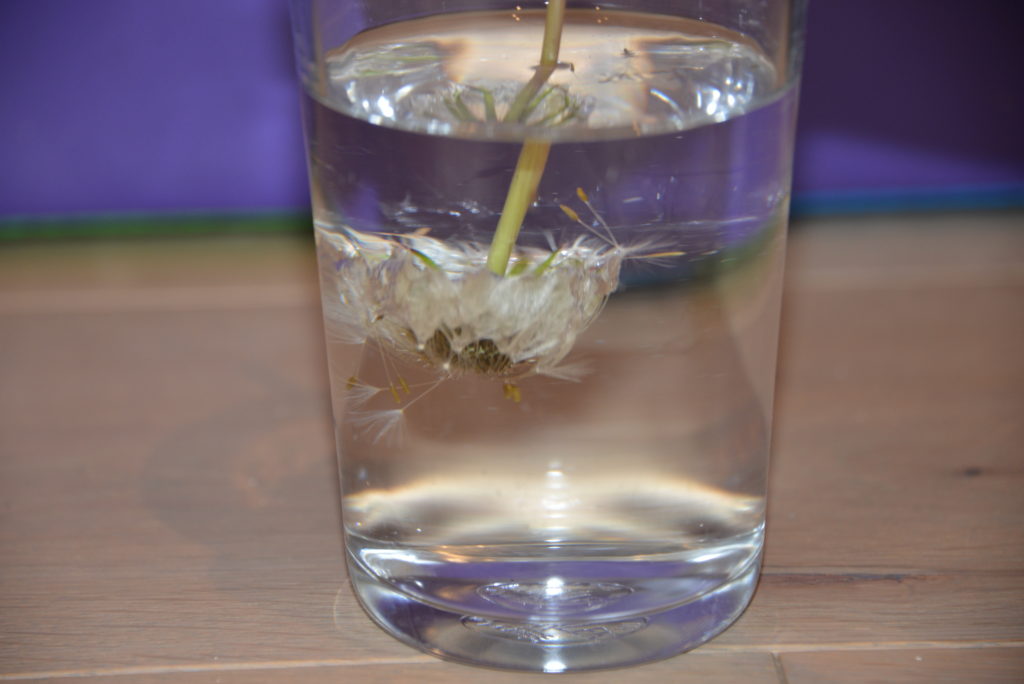
Dandelion Facts
A special air bubble forms on top of the filaments above the seed to help keep it in the air longer.
The word dandelion means lion’s tooth.
Dandelion seeds are produced asexually, so they don’t need to be pollinated. This means all dandelions are genetically identical to their parent plant.
Dandelion flowers close up at night.
All parts of the dandelion are edible!
Although they don’t need to be pollinated, dandelions are a very popular source of food for pollinating insects such as bees, moths, and butterflies. Their long flowering season makes them especially useful to insects. Next time you do some weeding, think about leaving some dandelions behind!
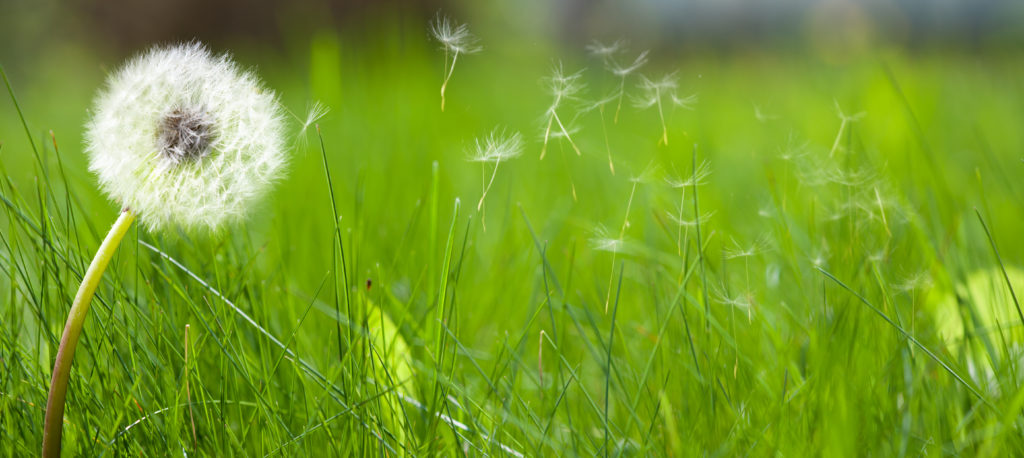
How does a dandelion clock form?
When the flower reaches a certain age, it starts to dry out, making the petals fall off, which exposes the seed ball. When the wind blows, the seeds are carried away from the parent plant. This is called seed dispersal.
More about seed dispersal
Learn more about seed dispersal methods by making a sticky seed or an exploding seed pod.
This video explains the science of dandelion seed and how it is specially adapted to travel far from the parent plant.
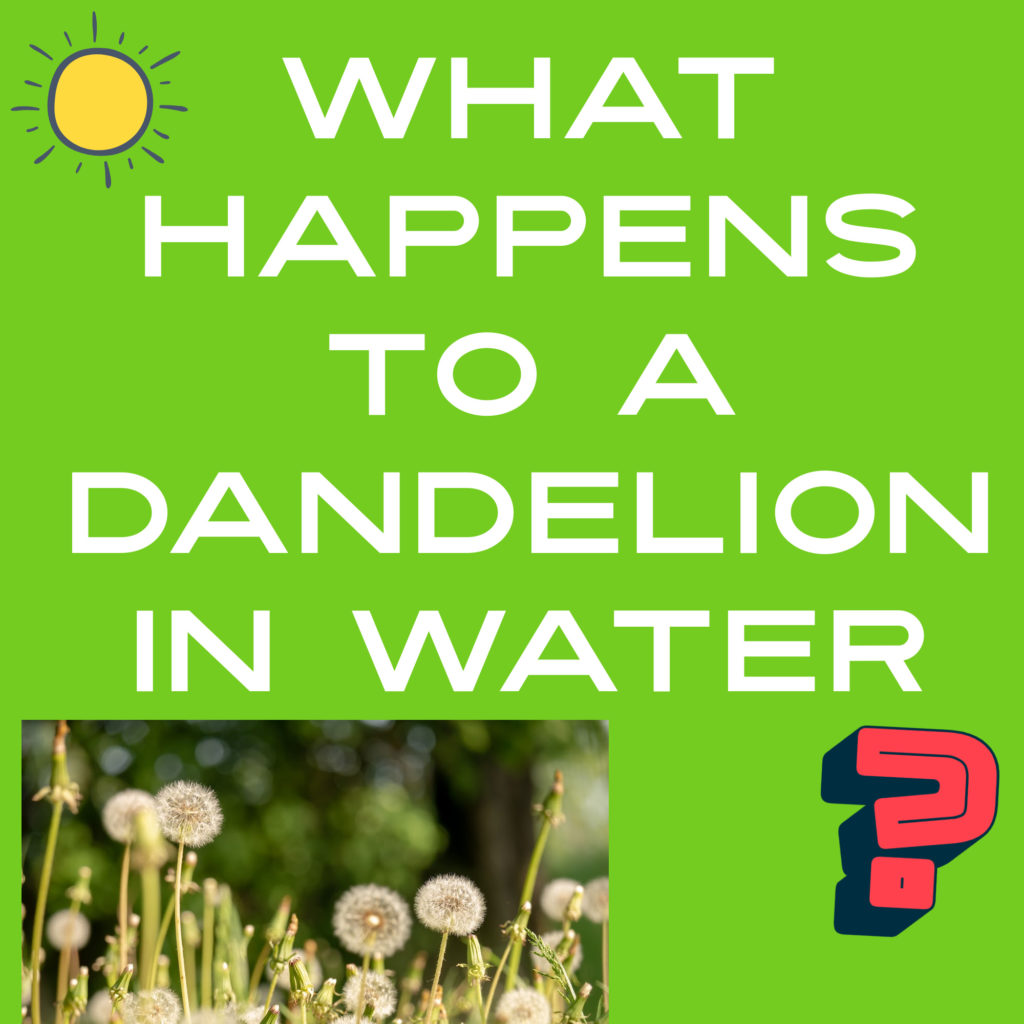
Last Updated on May 7, 2024 by Emma Vanstone

Leave a Reply